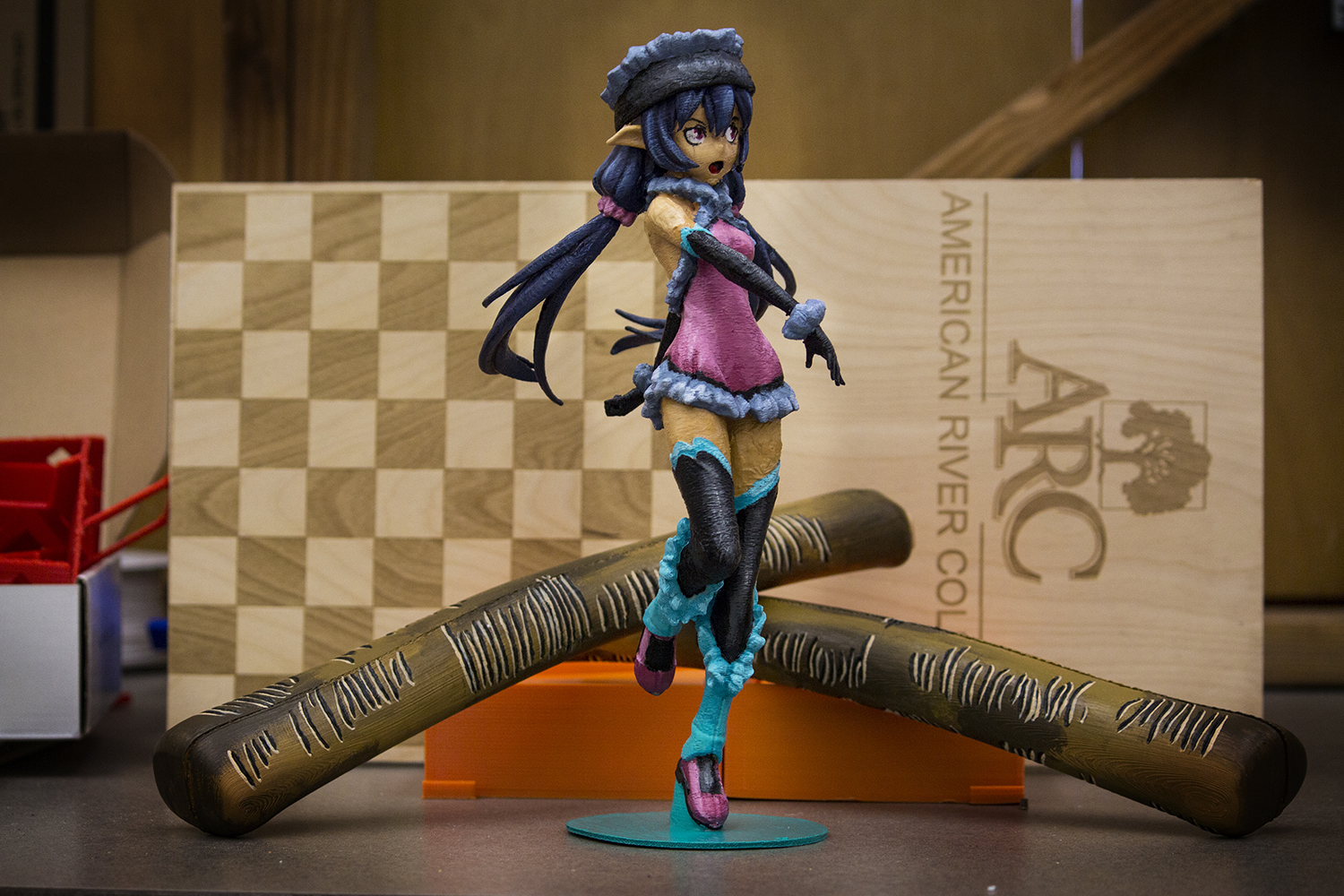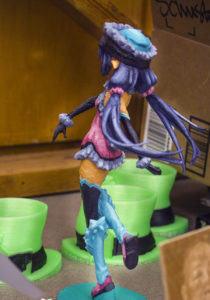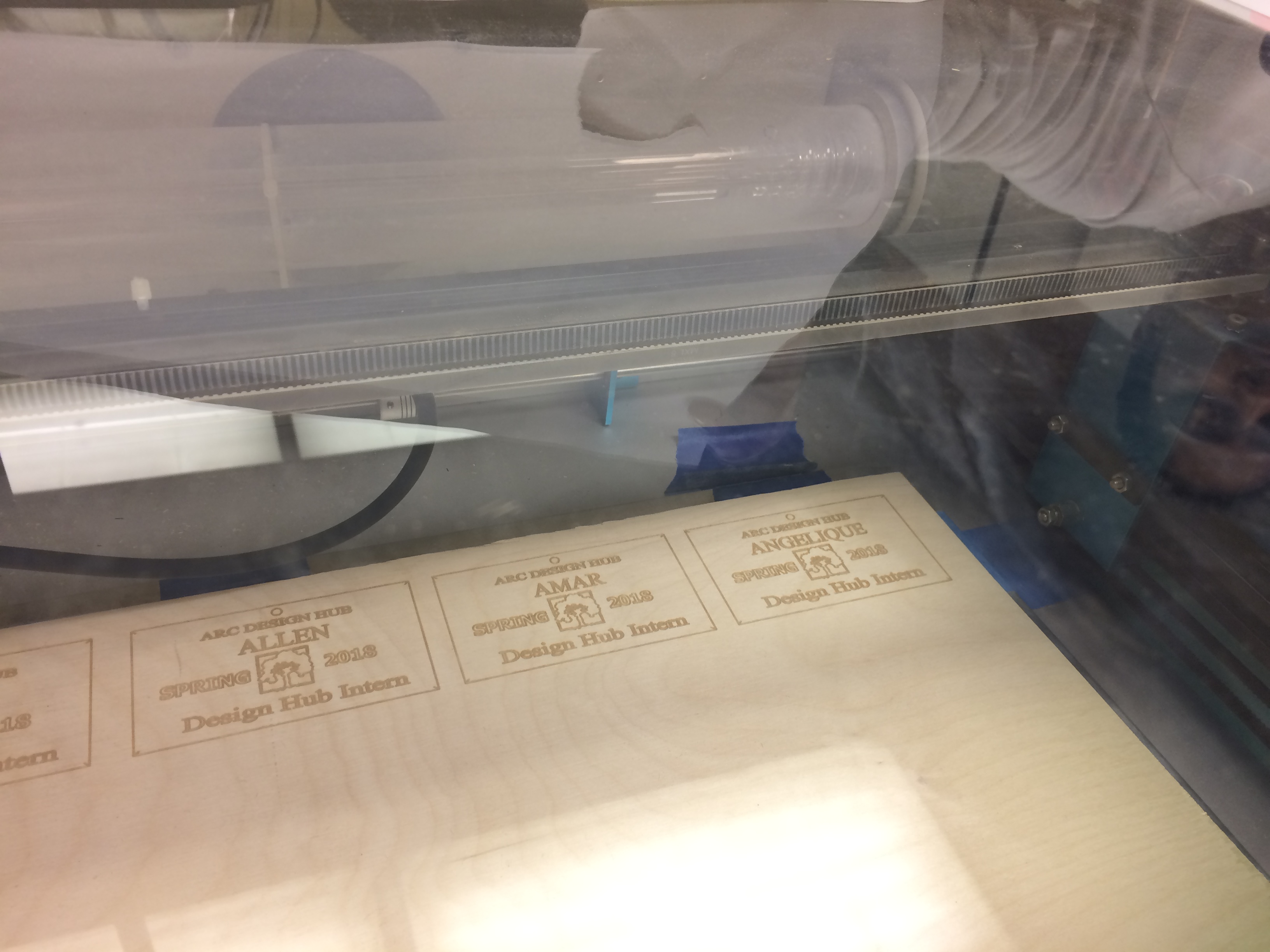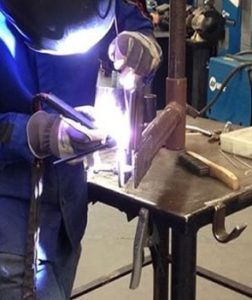
Here we meet up with Erika Gonzalez, the artist intern at the Design Hub involved in past projects such as the Ishango Bones and the Cell Membrane projects. Now she shows us her beautiful new sculpture that she is painting for Jiajun Guan. The people involved in this wonderful new project are: Erika Gonzalez, Jiajun Guan, and a team of 3D modelers and 3D printers.

Jiajun Guan found Erika painting the Ishango Bones (discussed in the other blogs and twitter posts) in the Design Lab 211, and was so inspired by her fantastic artistic talents with the paintbrush that he asked Randy, our tream ead at the Design Hub, to recruit her to do some work for him too! Erika was assigned to paint the generic anime character for Jiajin Guan, and she finished beautiful painting in 11 hours of work from March 8- March 12! Soon this sculpture of the generic anime character will be moved from the Design Hub Room 311 and will probably be moved to a place for student to stop by and look at it, or it may be placed on Jaijun Guan’s desk.

Even though this beautiful sculpture is the only of her kind, we can all look forward to seeing Erika Gonzalez’s fantastic art skills in the future projects that she will be participating in. She will be collaborating with Jiajun Guan with the Snow Wars project, specifically, working on the development of “Snow Wars Santas.”
She uses the same techniques as the cell membrane and Ishango bones projects: she paints the sculpture first with acrylic paint, then seals in the paint with Mod Podge. What was different with this sculpture was the way Erika painted the eyes: with an ink pen! She used the ink pen to add gentle and minute detail to the character’s eyes, giving them a certain life and sparkle. We are definitely looking forward to future art and 3D printing collaboration projects to come!











 Design Hub student Shayn found inspiration in his teacher’s words: “You just gotta do it!” Quoted from none other than the welding professor here at ARC, Chris Messier. “When he’s not teaching his students all he knows, he’s creating vacuum chambers with gloved hands and sheet metal. He is pictured giving an example of the TIG- or GTAW- welding process, something that is proven to be a pretty tricky task. Shayn tells us that he is taking his fabrication and blueprints reading class in the welding department at ARC. As Shayn explains this process, he gives us a piece of welding slang: “stacking dimes”, which is the process of getting the weld to look like dimes that have been melted on top of each other. “It’s actually the sign of a job well done,” Says Shayn. Seeing students inspired by their professors is always a great thing to see. Teachers leave not only an impression on the students, but on the campus community of makers, including those here at the Design Hub. Thank you Chris Messier for all that you do, and thanks to Shayn for sharing! More of Professor Messier’s work can be found on his instagram page: @mez_welds
Design Hub student Shayn found inspiration in his teacher’s words: “You just gotta do it!” Quoted from none other than the welding professor here at ARC, Chris Messier. “When he’s not teaching his students all he knows, he’s creating vacuum chambers with gloved hands and sheet metal. He is pictured giving an example of the TIG- or GTAW- welding process, something that is proven to be a pretty tricky task. Shayn tells us that he is taking his fabrication and blueprints reading class in the welding department at ARC. As Shayn explains this process, he gives us a piece of welding slang: “stacking dimes”, which is the process of getting the weld to look like dimes that have been melted on top of each other. “It’s actually the sign of a job well done,” Says Shayn. Seeing students inspired by their professors is always a great thing to see. Teachers leave not only an impression on the students, but on the campus community of makers, including those here at the Design Hub. Thank you Chris Messier for all that you do, and thanks to Shayn for sharing! More of Professor Messier’s work can be found on his instagram page: @mez_welds